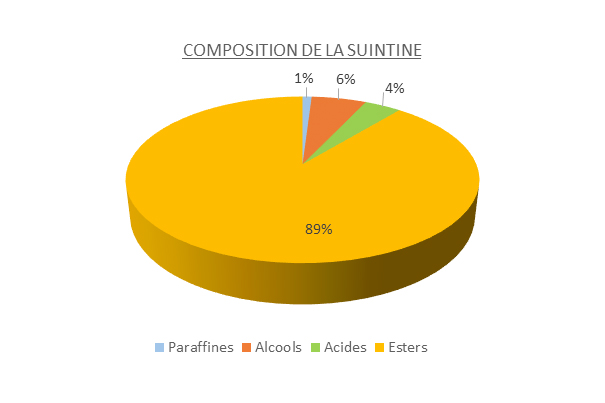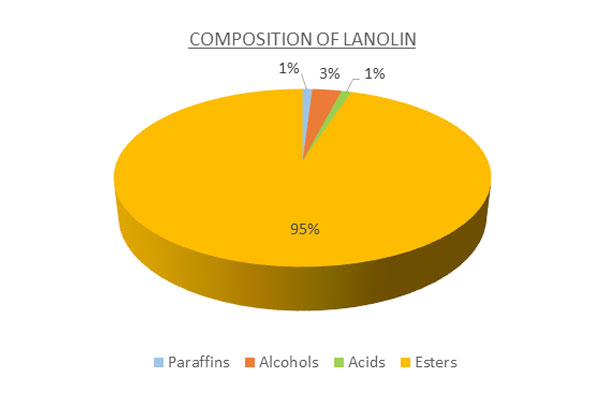
pure lanolin
a secure supply

extracted from sheep's wool

A 3-in-1 ingredient
Lanolin has been used since ancient times for skin care.

Wool grease is therefore a wax composed essentially of a mixture of esters of fatty alcohols (cholesterol, lanosterol, agnosterol, cetyl alcohol, ceryl alcohol, lano octadecyl alcohol and carnaubyl alcohol) and fatty acids (palmitic, myristic and lognoceric, capric, arachidic and cerotic acids) accompanied by a small percentage of these alcohols and acids in the free state.

Lanolin is a unique natural wax that most closely resembles human skin lipids.
Lanolin thus acts in bio-mimetic way with the skin and is positioned as an additional lipidic film on the stratum corneum of the epidermis. It acts as a complement or replacement for human epidermal lipids that may be insufficient and/or deficient (skin dryness, etc.).
It therefore helps with reconstituting a natural barrier against external aggressions and skin dryness. Just like a bandage, it prevents water from evaporating but still lets the skin breath.
A natural reservoir, lanolin can retain at least twice its weight in water. When emulsified and applied to the skin, it is moisturising. When combined with active agents, it becomes a vector for greater efficiency. The skin quickly regains its natural moisture level making it supple and restored.

It is a 3-in-1 ingredient :
| EMULSIFIER by its capacity to absorb water, |
| EMOLLIENT by its capacity to replace and/or reinforce the natural lipidic barrier, |
| MICROBIO BARRIER by its capacity to form a homogeneous film and thus allows to fight against the external aggressions. |
| It is interesting to note that in recent years, despite competition from a host of new products, where most of them are of chemical origin, lanolin manufactured by STELLA and which is 100% natural and traceable has become increasingly important in a wide variety of fields, including pharmaceuticals and cosmetics. |
There are two manufacturing sectors that in particular appreciate it :
| Because it is INALTERABLE : as it is well refined and stabilised, it does not go rancid or dry out. |
| Because it has GREAT EMULSION POWER WITH WATER to form a "water-in-oil" type emulsion. |
| Because it has a COMPLETE COMPATIBILITY WITH SKIN.. |

